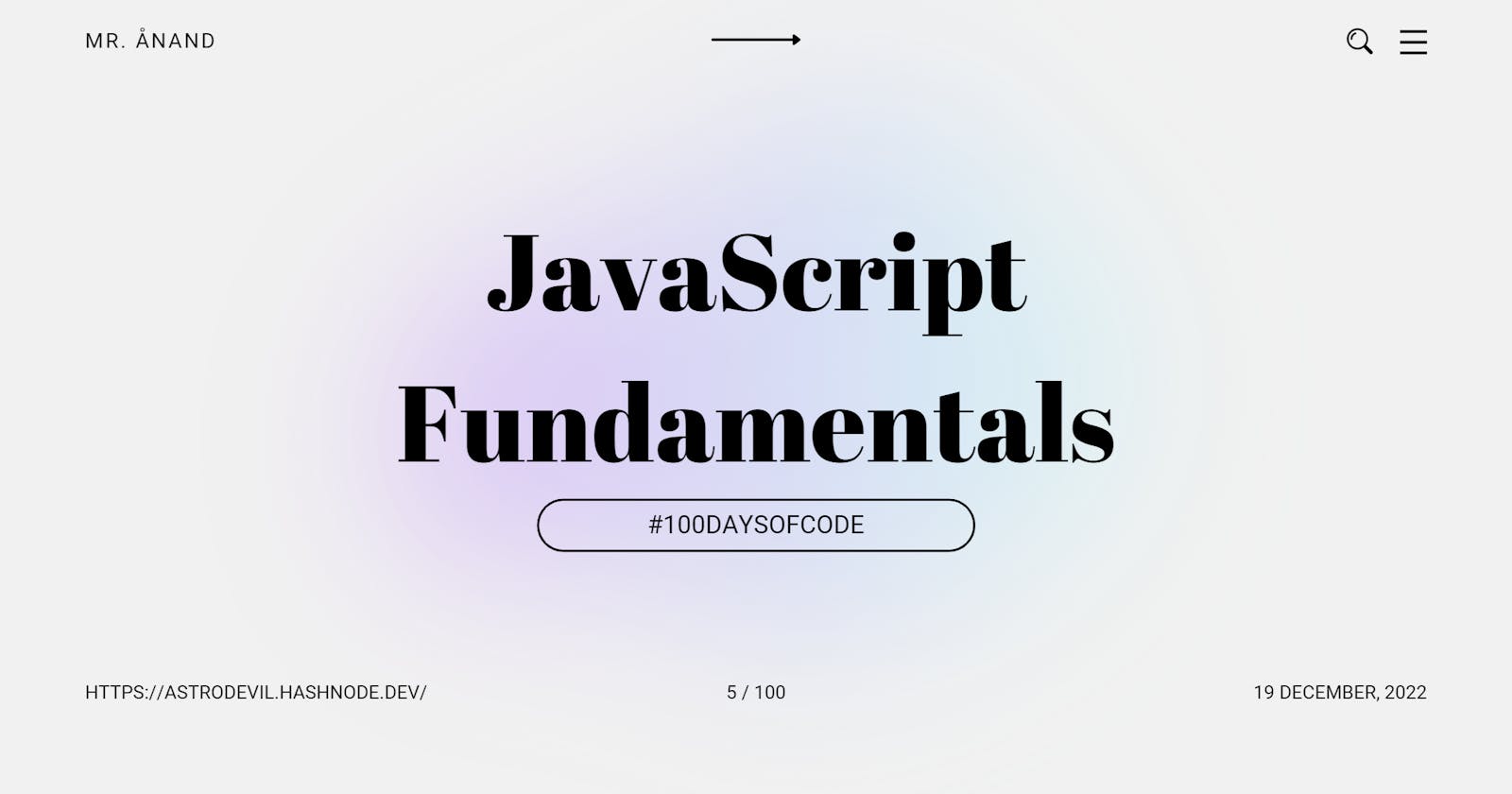Today is the 5th day of my #100DaysOfCode journey with JavaScript.
I write about my learnings in an explained way through my blogs and socials. If you want to join me on the learning journey, make sure to follow my blogs and social and share yours too. Let's learn together!🫱🏼🫲🏼
This Article is a part of the JavaScript Fundamentals series.
Console Log
The console.log will log values during the program's execution. If we console.log a value, that value will show in our test results. You will also often see console.log used in code examples:
let a = 22;
a = a + 10;
console.log(a); // 32;
Conditionals
Conditional statements control behaviour in JavaScript and determine whether or not pieces of code can run.
ifStatementUse of
ifwhen needing to branch based on a condition:if(1 === 1) { console.log( "Yes, it's true!" ); }In the above line,
1 === 1is the condition. The===operator referred to as the strict equality operator. It compares two values and evaluates them to betrueif they are equal.Example: Let's complete the isEqual function! If a is equal to b return true.
function isEqual(a, b) { return(a===b); }!==or Is Not Equal referred to as a strict inequality operator. This operator will evaluate totrueif the two values are not equal.console.log( 1 !== 2 ); // true console.log( 2 !== 2 ); // false console.log( 3 !== 2 ); // trueExample: Let's complete the
isNotEqualfunction! Ifais not equal tobreturntrue.function isNotEqual(a, b) { if(a !== b){ return true; } }elseStatementThe
elsestatement runs only if theifcondition is not true.if(isRaining === true) { stayIndoors(); } else { // isRaining is not true goOutside(); }Example: Let's update our
isNotEqualfunction to also handle the case whereais equal tob. If a is not equal tobreturn true. Otherwise, returnfalse.function greater(first, last) { if (first > last){ return first; } if (last > first) { return last; } }Let's take a look at two new operators, greater than
>and less than<operators! Both>and<will evaluate tofalseif the operands are equal:console.log(1 > 3); // false console.log(3 > 1); // true console.log(3 < 1); // false console.log(1 < 3); // trueThe values on either side of the operator are referred to as "operands". The operands for the equation
1 > 3are1and3.>=or<=OperatorBoth
>=and<=will evaluate totruewhen the operands are equal, unlike the>and<operators.function greaterThanOrEqualTo(a, b) { if(a > b) { return true; } if(a === b) { return true; } } // or // Both will accomplish the same functionality. function isEqual(a,b) { if(a === b) { return true; } return false; }else IfStatementWe can use
elseandiftogether:if(firstCondition) { // firstCondition is true } else if (otherCondition) { // firstCondition is not true and otherCondition is true } else { // neither condition is true }What happens if the two conditions were
true?const a = true; const b = true; if(a) { // this will run } else if (b) { // this will not run! } else { // this will definitely not run. }The important thing to take away from this is that
elsestatements will only run if the original condition is nottrue.
Conclusion
Ending with an extra bit of information about JavaScript functions...
In order to guarantee that code is readable to a standard, many organisations maintain a rigid style guide. {} are typically recommended for if/else statements.
Today I learned about Conditionals, If, Else, Else If in JavaScript.
